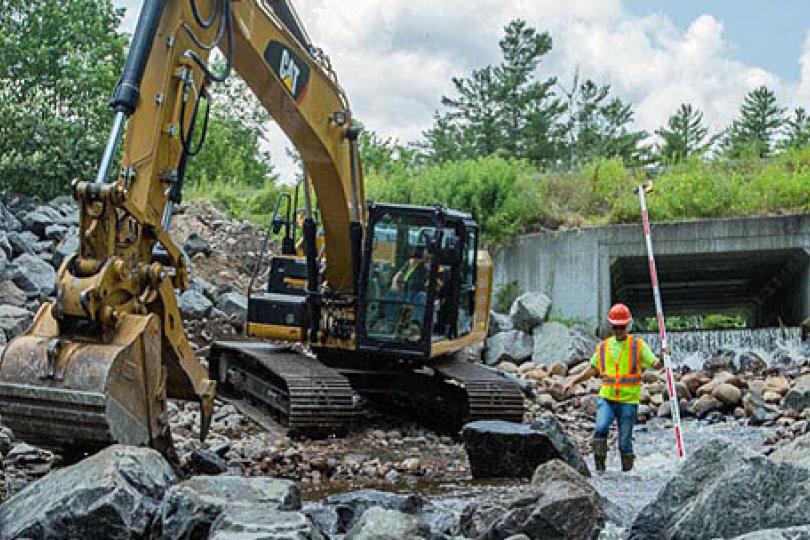Improving Aquatic Connectivity and Resiliency to Major Storms
It is easy to overlook the pipes and boxes carrying water under our roads, but these parts of our transportation infrastructure can have huge impacts on freshwater health and road safety.
These culverts are a big topic of conversation in Jessica Levine’s (2003) house, who has spent the past few years working on a project to replace and upgrade road crossings to benefit aquatic species and habitat. Her five-year-old has become especially obsessed and cannot walk over a stream crossing without asking if it is good for the fish. On Father’s Day last year he asked, “What do you want to do today, Dad? Should we drive around and look at culverts?”
Levine was initially hired by The Nature Conservancy, Adirondack Chapter (ANC), with funding from a Switzer Leadership Grant, to develop a pilot program. She quickly learned in the process of redesigning culverts for restored fish passage that flood resilience from extreme weather events got her more traction with local stakeholders and opened the door to more funding opportunities. She also learned that strong communication skills, tact, and thinking strategically are important assets in making connections between diverse groups, like environmentalists, emergency management agency personnel, and local road managers.
“We learned very quickly that the more ways we could approach the issue, the more success we’d have on the ground,” she says.
“After Hurricane Irene hit in 2011, I spent many hours meeting with local highway departments about their concerns. I asked, What keeps you up at night? Road managers aren’t thinking about fish, they are thinking about how to keep their roads open and safe on a very limited budget. Over time, I developed strong relationships and now they’re excited to work with us,” says Levine of her process.
The ultimate goal is to make flood-resilient and fish-friendly culverts become “business as usual.” This can be a hard sell, since improved culverts almost always cost more at the outset. Our Leadership Grant funded Levine’s time as she undertook an economic analysis of improved crossings. The report demonstrated that in the long term, improved culverts can actually save communities money because they last longer and withstand large storms better. These crossings also bring substantial environmental, social, and economic benefits. As part of her project she developed a cost sharing and collaboration model, with funding from sources as diverse as hazard mitigation, fish passage, climate adaptation, community resilience, and transportation enhancement.
Levine is currently working to develop five demonstration projects in the region that will serve as on-the-ground examples of success. The team knows the designs are good for fish, and they will also be tracking them over time to see how well they handle extreme storms. She is also developing outreach and technical materials to share this work across the region.
She is working with partners from local and state governments to identify longer-term funding sources and policy and planning opportunities. For example, improved
infrastructure standards could help ensure that replacement culverts are designed to ensure aquatic connectivity and withstand major storm events. She is also working with the state Department of Transportation to develop an economic valuation approach for stream crossings.
Having a sense of humor and perspective is sometimes a challenge when working with such diverse stakeholders, Levine says, but ultimately serving as a mediator between the different groups has been very rewarding.
“This work takes time, patience, and perseverance,” says Levine, “but I really enjoy the opportunity to work with diverse partners, from nonprofits to local highway crews and state agencies. Working together and demonstrating success on the ground can leverage this work across a much larger region.”
“These parts of our transportation infrastructure can have major impacts on freshwater health and road safety. If we can demonstrate success on the ground, we can leverage this work across a much larger landscape. There's potential for huge impacts on how we build and maintain our road infrastructure into the future.”
Additional Resources
Grant: Transportation Planning for Climate Adaptation and Aquatic Connectivity
Grant Outcomes: Culverts and Climate Adaptation in the Lake Champlain Basin
Jessica Levine's summary of report to ANC and partners (PDF)

